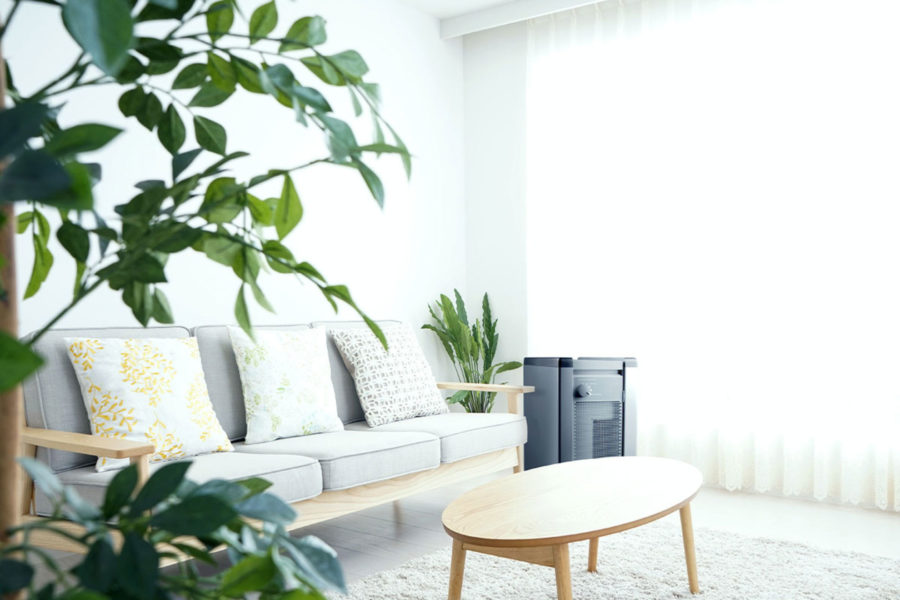Story at a glance:
- ActivePure Technology helps indoor occupants breathe easily with continuously treated air.
- This air-purification technology deactivates pathogens in real-time using minimal energy.
- HEPA filters and ventilation aren’t enough to meet today’s indoor air quality needs.
Humans spend approximately 90% of their time indoors. The quality and cleanliness of the air indoors has a large impact on occupants’ physical/mental health and overall well-being. That’s why indoor air purification solutions like ActivePure Technology are increasingly important.
In March 2022 the White House released updated guidance regarding air circulation and filtration to continue the fight against the SARS-CoV-2 virus. The guidance points to ventilation, filtration, and air cleaning in buildings as essential components to preventing airborne transmission of the virus.
The guidance calls for increases in air changes and filter efficiency and emphasizes the importance of ventilation in buildings. While these suggestions may yield improvements in indoor air quality, they may not be enough on their own—and for most buildings imply a costly and unsustainable demand of energy. More air changes means more energy consumption—a clash between climate and public health goals. The leaders at ActivePure offer a better way through new technology.
Treating the Problem Directly

Photo courtesy of ActivePure
Historically, increasing ventilation and filter efficiency has been the primary solution for improving indoor air quality. But these methods are not without their complications. “Air filters can only clean the air that flows through the filter, and most filters are unable to trap the ultra-fine particulate matter most commonly associated with bacteria and viruses,” says Amy Carenza, chief commercial officer at ActivePure. “Ventilation operates on the principle that outdoor air is fresh, which is not always the case, and outdoor pollution levels can lead to unhealthy levels of VOCs indoors. Furthermore, bringing in outdoor air increases the space conditioning load because the outdoor air will need to be heated or cooled to maintain thermal comfort indoors.”
Air purification technology like ActivePure makes it possible to deactivate pathogens in real-time using minimal energy. ActivePure uses a technology originally developed in conjunction with NASA to re-create the naturally occurring outdoor process of photolysis indoors. The technology allows the ambient humidity in indoor spaces to transform into cleansing, therapeutic ActivePure molecules. Those molecules then circulate throughout the indoor space—neutralizing pathogens, bacteria, fungi, mold, pollen, and volatile organic compounds, removing them from the air and surfaces without chemicals or additional ventilation.
Once the ActivePure device is turned on it begins to work instantly, filling the space with ActivePure molecules within seconds. “We aren’t going to ventilate our way out of this problem,” Carenza says. “The deficit has to be solved by new technology. We are facing climate change, an energy crisis, and infrastructure issues. The best way to decrease energy use meanwhile improve occupant health and safety is with ActivePure Technology.”
ActivePure detailed this “Clean First” mentality in its response to the White House request for information regarding the Clean Air in Buildings Challenge. By using active technology like ActivePure to clean indoor air, we can address problems like the spread of airborne diseases that are not being addressed by ventilation and filtration alone.
Necessity: The Mother of Invention
Opening doors and windows and keeping fans on may help improve air quality and decrease the spread of illness, but it is not a year-round solution in many areas due to weather. And data shows it isn’t very effective. In fact, a teacher in California was responsible for infecting half her students with Covid in May 2021 while doors and windows were open and portable HEPA filters were in the classroom.
“We aren’t supposed to accept getting sick,” says Dr. Deborah Birx, chief medical and science advisor at ActivePure and former White House Coronavirus Task Force coordinator. “We were used to tolerating a significant amount of respiratory disease, but Covid has pointed out there are solutions to not having to tolerate indoor spaces being spreading areas for pathogens. We are not adequately using all the tools we have available to create a healthy environment. As a global community, when you have technology that can prevent transmission in indoor spaces, it is critical we use it.”
Carenza compares it to the focus on water quality in the mid-1900s with the passing of the Federal Water Pollution Act and its growing public awareness in the 1970s. Now clean and drinkable water quality is an expected and necessary part of any building or facility’s offerings. “Before the mass shift to improving water quality in the 20th century more than half of public water sources were infiltrated with toxic substances, pollution, and viruses. The natural purification processes that were once standard were no longer acceptable, so new processes and technologies were implemented to meet the new standards. The same applies to the air we breathe,” she says. “Covid showed all of our vulnerabilities regarding air quality. It is a highly fit, highly functional virus that can infect you with just a few particles in a seemingly empty room. Now that we are aware of our vulnerabilities, it’s up to us to layer in the necessary protections to protect ourselves. We did it for water. We have the same opportunity with air.”


